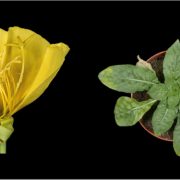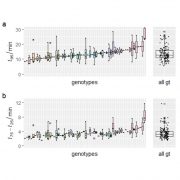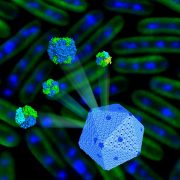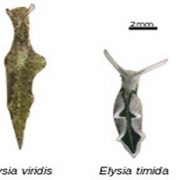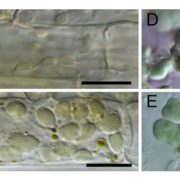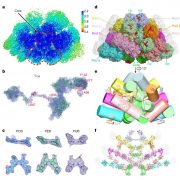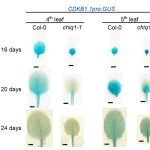Leaf cell-specific and single-cell transcriptional profiling reveals a role for the palisade layer in UV light protection (Plant Cell)
 Leaves are the specialized organs of the plant that have evolved to maximize the use of light and CO2 for efficient photosynthesis. Although knowledge of photosynthesis has exploded recently, the molecular intricacies underlying leaf anatomy, especially mesophyll, remains unravelled. The palisade mesophyll forms the columnar layer at the adaxial side and conducts light into the leaf. Despite its importance in photosynthesis, less is known about the unique molecular markers of palisade cells. Procko et al. generated a transcriptional profile of palisade mesophyll in Arabidopsis through the combination of bulk palisade cell purification and single-cell RNA sequencing. Although the cells have unique cellular feature and placement, the gene expression was highly similar to other photosynthetic cells, suggesting a conserved genetic blueprint of photosynthetic cells. However, expression of genes from phenylpropanoid pathway were enriched in palisade cells. The authors revealed that a phenylpropanoid related gene FAH1 (FERULIC ACID 5-HYDROXYLASE 1) producing a UV-B protectant, sinapoylmalate, was expressed at high levels in palisade cells. This highlights the novel role of palisade mesophyll as the “sunscreen” in protecting the leaf from photooxidative UV damage that is further supported by its location. (Summary by Prakshi Aneja @PrakshiAneja) Plant Cell 10.1093/plcell/koac167
Leaves are the specialized organs of the plant that have evolved to maximize the use of light and CO2 for efficient photosynthesis. Although knowledge of photosynthesis has exploded recently, the molecular intricacies underlying leaf anatomy, especially mesophyll, remains unravelled. The palisade mesophyll forms the columnar layer at the adaxial side and conducts light into the leaf. Despite its importance in photosynthesis, less is known about the unique molecular markers of palisade cells. Procko et al. generated a transcriptional profile of palisade mesophyll in Arabidopsis through the combination of bulk palisade cell purification and single-cell RNA sequencing. Although the cells have unique cellular feature and placement, the gene expression was highly similar to other photosynthetic cells, suggesting a conserved genetic blueprint of photosynthetic cells. However, expression of genes from phenylpropanoid pathway were enriched in palisade cells. The authors revealed that a phenylpropanoid related gene FAH1 (FERULIC ACID 5-HYDROXYLASE 1) producing a UV-B protectant, sinapoylmalate, was expressed at high levels in palisade cells. This highlights the novel role of palisade mesophyll as the “sunscreen” in protecting the leaf from photooxidative UV damage that is further supported by its location. (Summary by Prakshi Aneja @PrakshiAneja) Plant Cell 10.1093/plcell/koac167


